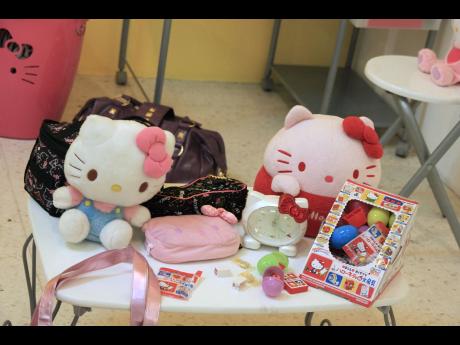Unique Tokyo museum imparts lessons in anime
TOKYO, Japan:
Japan's animation industry is celebrating its 100th anniversary this year, and earlier last month, an exhibition at the anime museum in Tokyo's Suginami Ward was mounted.
While the Black Jack and Dragon Ball series and characters like Goku, Pokemon, Astro Boy, and Naruto are well known in Jamaica and the wider Caribbean, museum officials say that this is only a fragment of the animation produced in Japan.
There are about 80 different animation stories introduced every week, with a total of 11,000 titles during the 100 years.
Anime is a technique that uses a series of films that create the illusion of movement, usually with characters that are otherworldly.
It became widely popular in Japan in the 1950s with the beginning of television broadcasting. Anime in those days were short-form cartoons with a significant Disney influence, as well as by other American cartoon characters such as Betty Boop and Popeye.
But the Japanese animation industry especially took off with the work of local anime pioneer Osamu Tezuka, who is perhaps best known for developing the Astro Boy story. Until Tezuka, animation films in Japan were very short and did not have much of a storyline.
Astro Boy, a 30-minute animation with an engaging storyline, became a major hit.
Today, the anime industry is enormous in Japan, with over 200 original animation films created in the country.
While there are more than 600 animation studios across Japan, most are located in Tokyo and are especially concentrated in Suginami. The area is widely recognised as the 'town of animation'.
The showcase at the Suginami Animation Museum is the walk down the path of history, from the days of analogue to megapixel digitalisation.
Today, the animation industry has grown exponentially and has opened exciting career opportunities for those who are creatively inclined.
In 2015, the size of the global animation industry was about US$244 billion, with the United States, Canada, Japan, China, France, Britain, Korea, and Germany as the sought-after markets.
MORE OPPORTUNITIES
It is estimated that the industry is growing at a five per cent year-on-year basis and opening opportunities for outsourcing of computer-animation production, which is being tapped by North American and European film and television producers.
This is an opportunity that Jamaica and the wider Caribbean can benefit from and look to tap into this burgeoning industry to position themselves as hubs of creating quality animation.
Visitors to the museum, which was established by the Suginami municipal government to support the area's studios and which does not charge an admission fee, are allowed to view mock-ups of the different parts of the production process.
The preparatory stage includes planning, design, and storyboarding.
The production stage is where colour and background are added, while post-production is where editing and recording are done.
HIGHLY APPRECIATED
"Anime has come to be highly appreciated worldwide in the recent years as a unique art originating from Japan," says Shinichi Suzuki, director of the Suginami Animation museum, in his message in the museum's brochure.
"While anime now enjoys increasing popularity," Suzuki continues, "we must not forget that in the history of anime, there were people who struggled to make a living but who were extremely driven and dedicated to perfecting their art. It is these people who really deserve our admiration."
To produce a 30-minute piece, over 300 sets of background, 200 persons, and 4,000 scenes may be used.
While the earlier animation process was very detailed and intricate, with the scenes and characters drawn by hand, today, some of those processes, for example, background creation, have been computerised.
Visitors to the museum include adults and groups of grade-school children, all of whom were equally excited to be allowed to draw anime characters using templates in a studio and use a machine to do voice-over.
The visit to Japan is part of 'Pacific Islands and Caribbean Journalists' Programme' organised by the Tokyo-based Association for Promotion of International Cooperation, with support from the Foreign Press Centre, Japan.




